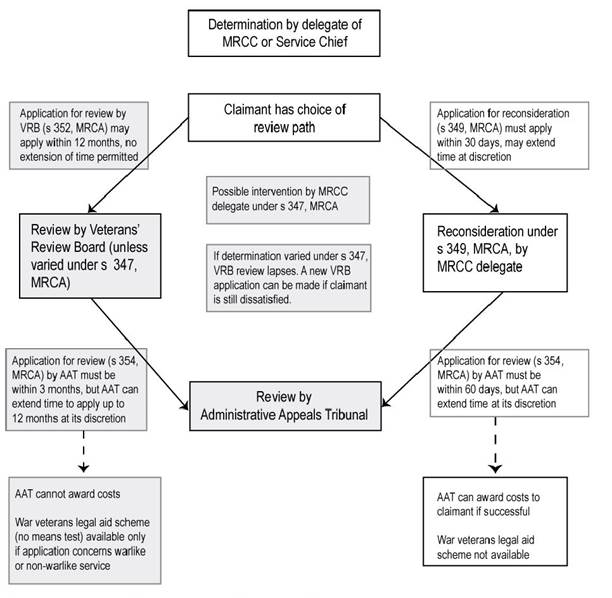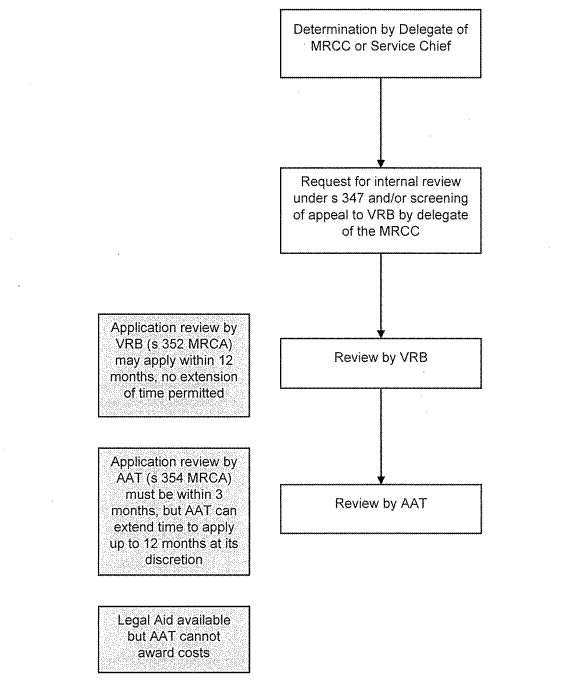Chapter 1
Introduction
Referral of inquiry
1.1
On 7 September 2015, the Senate referred Schedule 2 of the Veterans' Affairs Legislation Amendment (2015 Budget Measures) Bill
2015 to the Senate Foreign Affairs, Defence and Trade Legislation Committee for
inquiry and report by
25 September 2015.
Conduct of inquiry
1.2
The committee advertised the inquiry on its website, calling for
submissions to be lodged by 14 September 2015. The committee also wrote
directly to a range of people and organisations likely to have an interest in
the bill, drawing their attention to the inquiry and inviting them to make
written submissions.
1.3
The committee received 21 submissions and two supplementary submissions
to the inquiry. These submissions are listed at Appendix A and are published on
the committee's website.
1.4
The committee held a public hearing on 17 September 2015. The witnesses who
appeared at the hearing are listed at Appendix B and the programs and Hansard
transcripts of the hearings are published on the committee's website.
Background
1.5
The Military Rehabilitation and Compensation Act 2004 (MRCA) provides
compensation and other benefits for current and former members of the
Australian Defence Force (ADF) who suffer a service wound, injury or disease
(and for the dependents of some deceased members of the ADF).
1.6
MRCA provides two pathways through which a claimant can seek a
review of an original determination:
-
internal reconsideration by the Military Rehabilitation and
Compensation Commission (MRCC) initiated by the claimant, under section 349; or
-
review by the Veterans' Review Board (VRB), under section 352.
1.7
The claimant is able to choose only one of the two pathways. The next
stage of appeal for both of these pathways is the Administrative Appeals
Tribunal (AAT). See Figure 1.
Figure 1.1 – Current appeal pathways

Note:
Shaded boxes show the same path as available under the Veterans'
Entitlements Act 1986
Source: Department of Veterans'
Affairs, Submission 17, p. 5.
1.8
If a claimant chooses internal reconsideration, he or she cannot access
legal aid[1]
but if the determination is varied or set aside and remade by the AAT, the AAT
may order that the costs of the proceedings incurred by the claimant be paid by
the Commonwealth.[2]
If the claimant chooses review by the VRB, he or she may access legal aid at
the AAT, but the AAT may not order that the costs of the proceedings be paid by
the Commonwealth.[3]
1.9
The current appeals pathway was introduced to 'reflect the
reconsideration and appeal rights available under the SRCA [Safety,
Rehabilitation and Compensation Act 1988] for all service and for claims
arising from warlike and non-warlike service' – this was the result of an
inability to reach consensus amongst stakeholders regarding a single model.[4]
In explaining the development of the review model, the then Secretary of the Department
of Veterans' Affairs (DVA), Dr Neil Johnston AO, noted that:
...we advised the government, in the light of the discussions
in the working party where there was no consensus on a single preferred model,
that the best option was to continue with two parallel tracks in a sense
travelling more closely together now and providing more obvious points of
comparison. We expect that over a period of some years now that there will be a
better opportunity to compare the two and if possible meld them or learn from
each other. At this point, we certainly have not been able to put forward a rationale
or an analysis that has been persuasive to the veteran community on a preferred
melding of the two.[5]
Review of Military Compensation
Arrangements
1.10
In 2011, the Review of Military Compensation Arrangements (the Campbell Review)
made the following recommendations with regards to improving the appeals
process under MRCA:
-
that the determining system under MRCA be refined to a single
appeal path to the VRB and then the AAT, as a means of a more timely review
that is less complex and less costly;
-
that internal consideration by the MRCC be the first step in the
review process, and the process for section 31 reviews under the Veterans'
Entitlements Act 1986 (VEA) be adopted, to help ensure the quality of
decisions that are considered by the VRB and reduce workloads and costs;
-
that there be access to a case conference process by the VRB so
that, wherever possible, the key questions and relevant evidence are
established as early as possible and the hearings can proceed without
unnecessary delay;
-
that, in advance of the adoption of a single path, a formal
service level agreement between the MRCC and the VRB be negotiated to define a
comprehensive case conference process within current legislation; and
-
that MRCA be amended to provide the VRB with explicit powers to
remit a matter to the MRCC for needs assessment and compensation.[6]
1.11
Schedule 2 is intended to give effect to the Campbell Review's
recommendations regarding the provision of a single pathway.
Purpose of Schedule 2 of the bill
1.12
The amendments contained in Schedule 2 of the bill create a single
appeal pathway for the review of original determinations made under MRCA and
remove the pathway, available under section 349, of claimant-initiated internal
reconsideration by the MRCC.
Provisions of Schedule 2 of the
bill
1.13
Items 1 to 4 amend section 344 of MRCA, which provides a simplified
outline of Chapter 8, removing references to the right of a claimant to apply
to the MRCC for reconsideration or review of an original determination as well
as removing references to there being two possible pathways for reconsideration
and review.
1.14
Item 5 repeals paragraph 345A(2)(c), which refers to subsections 349(2)
and (3), which are repealed by Item 8.
1.15
Item 6 amends subsection 346(5) of MRCA, which requires that notification
of original determinations include a statement advising that the claimant may,
if dissatisfied with the original determination, request reconsideration of the
determination by the MRCC.
1.16
Item 7 amends the heading of section 349 to remove reference to the claimant
initiating reconsideration of determinations.
1.17
Item 8 repeals subsection 349(1) of MRCA, which states that the claimant
may request that the MRCC reconsider an original determination. It also repeals
subsection 349(3) of MRCA, which states that a claimant cannot request that the
MRCC reconsider an original determination if the claimant has already made an
application to the VRB for review of the determination.
1.18
Item 9 repeals subsection 352(2) of the MRCA, which states that a
claimant cannot make an application to the VRB if the claimant has already
requested that the MRCC reconsider the determination under section 349.
1.19
Item 10 provides that, after the item's commencement, the amendments
made by Schedule 2 will only apply in relation to original determinations made
on or after commencement. As such, original determinations made before the
commencement of Schedule 2 of the bill will continue to be subject to the
provisions of Chapter 8 of MRCA as they existed before the amendments.
The proposed single appeal pathway
1.20
Following commencement of Schedule 2 of the bill, the proposed single
appeal path will consist of review by the VRB and appeal to the AAT, as
outlined in Figure 1.2 below.
1.21
Under the proposed single appeal path the MRCC or the Chief of the
Defence Force retains the ability to initiate a reconsideration of an original
determination, under section 347 of the MRCA; however, the ability for a
claimant to initiate a reconsideration of an original determination by the MRCC
under section 349 is removed.
1.22
DVA noted that this amendment to the appeals pathway will align the MRCA
with the VEA appeals process:
The appeal process under the VEA allows for an internal
review under section 31, a VRB review, or both at the same time. The reason for
this is tied to the way appeals under the VEA are structured and the date of
effect for entitlement claims. The VEA does not legislate for claimants to
request a review under section 31, only for the Repatriation Commission to
conduct a review on its own motion. In practice, the [Repatriation] Commission
allows claimants to request a review under section 31 and the section 31
delegates will respond to a request.[7]
1.23
The proposed single appeal pathway will also include a 'screening
process', to ensure that any cases that are appealed to the VRB are examined by
the MRCC prior to the commencement of the VRB process:
The MRCC has decided that all appeals to the VRB will
undertake a 'screening process', similar to that currently undertaken with
section 31 reviews under the VEA, upon receipt of a VRB application. The review
will involve an examination of the evidence on file, including any additional
statements/arguments or evidence that may have been provided...The MRCC review
delegate will also have discretion to decide which appeals will benefit from a
thorough investigation and which are best 'screened' and passed on to the VRB
for a hearing before the Board.[8]
1.24
DVA advised the committee that the process will be finalised before an
appeal is processed by the VRB. Further, if the MRCC review delegate, after
investigation of the evidence, decides that a different decision could be made,
then this new decision will replace the original determination. This is
intended to 'save the claimant from having to undertake the VRB process, if
they are satisfied with the new decision'. [9]
Figure 1.2 – Proposed single appeal pathway

Source: Department of Veterans'
Affairs, Submission 17, p. 6.
Alternate Dispute Resolution
1.25
In June 2014, the Veterans' Affairs Legislation Amendment (Mental
Health and Other Measures) Act 2014 was enacted to give effect to the
Campbell Review's recommendation that case conferencing be introduced at the
VRB. The objective is to have key questions and relevant evidence established
as early as possible and hearings proceeded without unnecessary delay.[10]
1.26
This provides for alternate dispute resolution (ADR) through the VRB,
including single member decisions, remittal powers and power to give
directions, case appraisal, and neutral evaluation. Under the ADR guidelines,
the VRB will allow lawyers to appear during the ADR process to make
submissions; however, lawyers will continue to be prohibited from appearing at
VRB hearings.[11]
1.27
These changes are expected to 'substantially reduce the time taken for
an appeal to the VRB to be finalised' providing the VRB with 'modern and
effective ADR processes similar to other Commonwealth merits review tribunals':
The intent of the introduction of ADR is to improve the
quality of service provided to applicants before their application is
considered by the VRB. The VRB conference registrars are responsible for
facilitating the ADR process at the VRB and undertake an initial 'outreach'
contact with applicants and/or their representatives.[12]
1.28
DVA reported that, while the ADR trial is still in progress, early results
are encouraging. The pilot being conducted in New South Wales (NSW) and the
Australian Capital Territory (ACT) has processed 309 cases within the first six
months of 2015. Each of the 309 cases was processed in under 48 days, with
close to 50 per cent processed within 29 days. Furthermore, over 61 per cent of
cases (189) were resolved without the need to proceed to a hearing at the VRB.[13]
Effectiveness of primary decision making
1.29
DVA advised the committee that it regularly conducts analysis of
decisions which are set aside by the VRB to ensure that there are no systemic
deficiencies in the primary decision making process. DVA report that the latest
analysis, conducted in 2015, found that decisions were predominantly set aside
when the VRB obtained new evidence in support of an appealed claim. The
analysis of a sample of set aside cases showed that 75 per cent had new
evidence submitted and 8.5 per cent had new contentions. DVA noted that 'a
significant amount of this new evidence related to medical opinion that was not
available at the primary assessment or internal review stage'.[14]
Navigation: Previous Page | Contents | Next Page